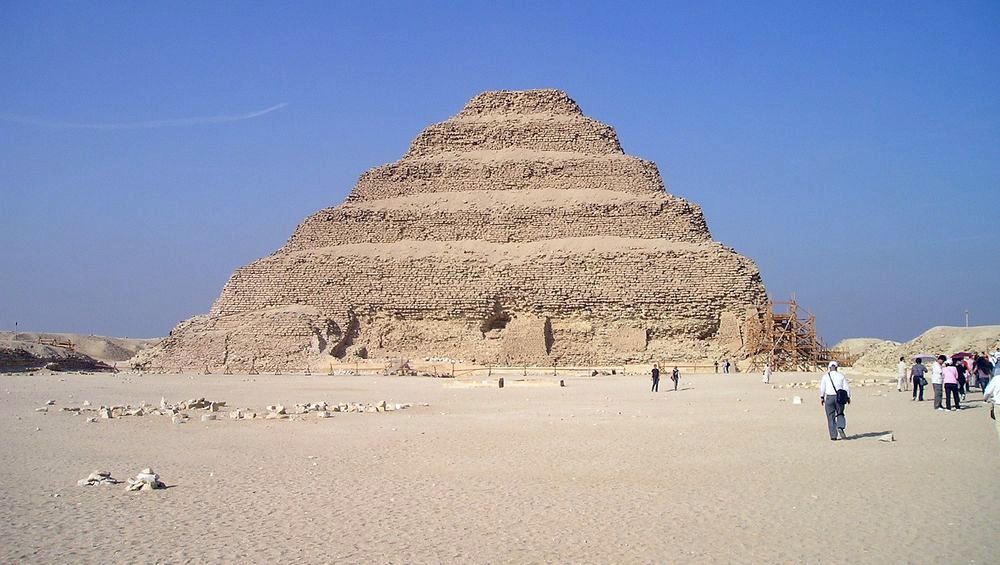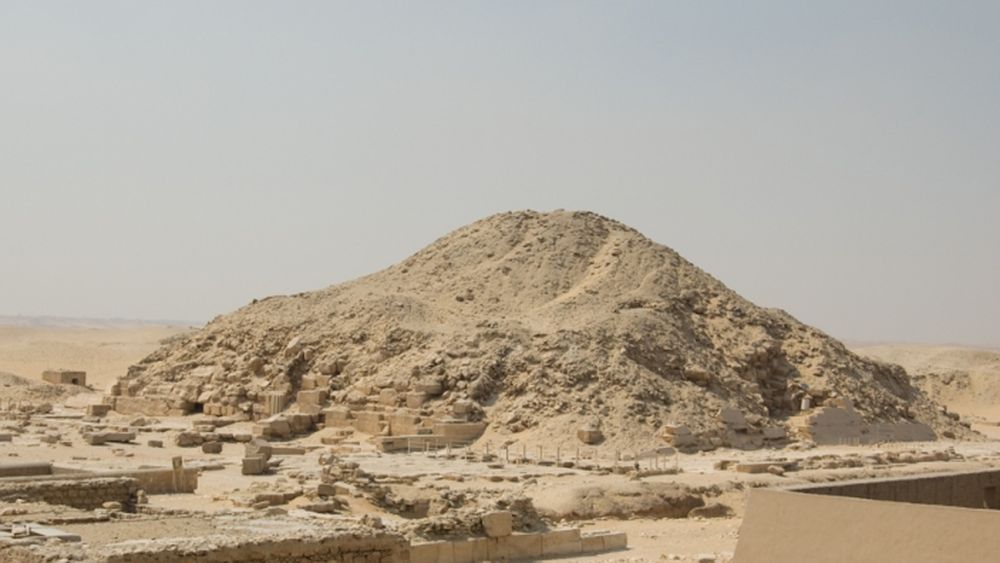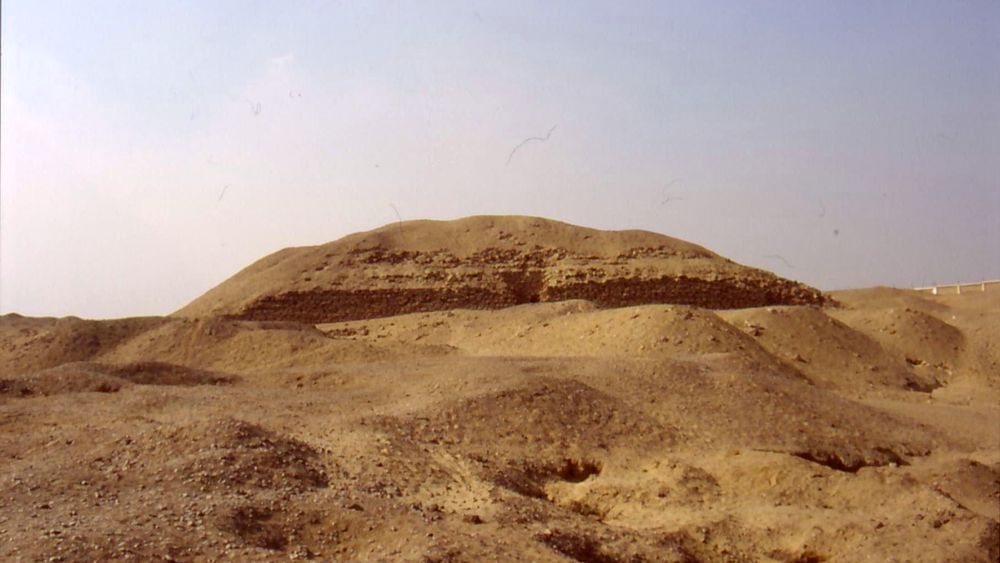The Step Pyramids are the first pyramids of Egyptian history, they were built during the first period of the pyramid era. They are characterized by a succession of level-terraces that are also found in other civilizations as the Maya, for example.
Time
The very first Egyptian pyramid is a step pyramid, it was with it that was launched the period of the pyramids in Egypt.
We are then before 2600 BC, but it is difficult to have exact dates because the modern archeology does not reach, with the little material of the time, to date precisely the beginning of the construction of this pyramid. It was Pharaoh Djoser who had it built. Djoser was the first pharaoh of the Third Dynasty.
The successors of Djoser will also build large funerary complexes based on a step pyramid, until the first pharaoh of the following dynasty, Snefru, of the 4th Dynasty, tries to make pyramids with smooth faces, then entering the next phase of the pyramid period.
The 4 step pyramids
There are four Step Pyramids, all built under the Third Dynasty.
The pyramid of Djoser
The first step pyramid is the Djoser one..
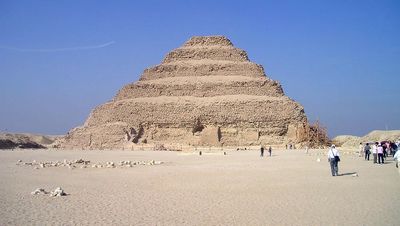
Step pyramide of Djoser
This pyramid is fantastic in its design. Initially simple mastaba, his builder made several modifications. First, he added a second mastaba over the first one. Then, he enlarged the whole on one side and had to dig auxiliary funeral rooms. Then he made several steps rise above the mastabas, forming a step pyramid. He then had the pyramid enlarged twice, the amount to 62m in height.
The funerary complex of Djoser is far more important than the pyramid. It is a large rectangular ensemble surrounded by a high stepped wall with tombs, underground chambers, chapels, temples, courtyards, etc.
It is the architect Imhotep who was the builder of the funerary complex of Giza. This well-known character is linked to the collective imagination as soon as we speak of ancient Egypt. He appears in many movies and books.
The pyramid of Sekhemkhet
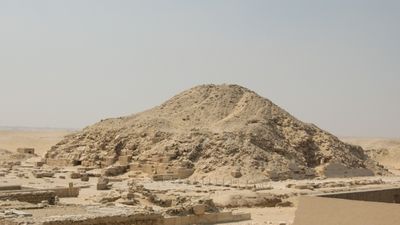
The pyramide of Sekhmekhet
Djoser's successor was Pharaoh Sekhemkhet. He built a funeral complex similar to his father's at Saqqara, in the Southwest. Unfortunately it remained unfinished, probably because of the premature death of the pharaoh who reigned only 6 or 7 years, which is insufficient to build the entire funeral complex (It is estimated at 20 years the duration of such a construction site). The pyramid of Sekhemkhet should have been 7 degrees for a height of 70m, so 8m higher than that of its predecessor. Nowadays there are still a lot of remains, on a platform of 260m x 180m perfectly flattened. In particular, we see the first rows of limestone blocks that rise up to 7m in height. The pyramid was to be surrounded by a high wall with steps of 550m long and 200 wide and contain several buildings.
The archaeological site of Sekhemkhet was excavated in the 50s, allowing the release of the bottom of the pyramid. Unfortunately the director of the excavations, the Egyptian Zakaria Goneim, died in 1959 and since the site is abandoned. No doubt one day a successor will come to take over to discover the secrets of this pyramid still largely unexplored.
The Khaba slice pyramid
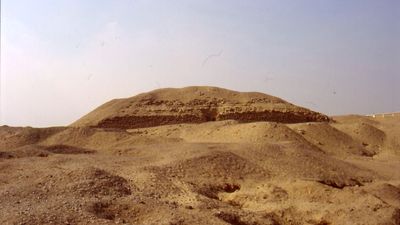
The pyramid of Khaba
The next pharaoh is Khaba, he is still a member of the Third Dynasty. This dark pharaoh had his pyramid built as his predecessors, the main piece of his funerary complex. It has a base 83m wide and should have been between 5 and 7 degrees, we do not know for now, for a total height between 40 and 45m.
The pyramid of Khaba is called "slices" because it has a different conception of pyramids with degrees. The end result is a step pyramid, however. It is made around a central core square wide of 11m against which was built slices of 2m60 high, smaller and smaller widths. Unfortunately we only have 17m pyramid left, the rest having collapsed.
The excavations made around this pyramid have not cleared any block of facing, as is often the case. In addition no sarcophagus has been cleared, and it seems that the ancillary buildings, including the enclosure, have not been built or barely sketched. As for the pyramid of Sekhemkhet, that of Khaba has never been completed.
The pyramid of Lepsius N ° 1
Fourth pyramid of the list of pyramids with degrees, this pyramid was never attributed. As we ignore its builder, it is named after the name of the German Egyptologist Karl Richard Lepsius (1810-1884) who made the list of all the pyramids of Egypt by numbering them. This one is the pyramid of Lepsius N°1.
Suspicions seem to be attributed to Pharaoh Houni, the last pharaoh of the Third Dynasty, but this has never been confirmed. Still, this pyramid is 215m wide at its base for a height between 107 and 150m, depending on the slope it could have. It should be noted that 150m high, it is simply higher than any Egyptian pyramid, even higher than the famous pyramid of Khufu
The steps of the pyramid of Lepsius No. 1 are made of raw bricks covered with a siding giving it the appearance of a pyramid with smooth faces, but nowadays it is too collapsed for us to know more.
The end of the step pyramids
Unlike the other phases of the pyramid period, the phase pyramids did not stop at once since it is followed by the phase of the Provincial pyramids, pyramids of the end of the 3rd dynasty or the beginning of the IVe, and which saw the construction of 8 small step pyramids. They could even be considered as part of the phase of the step pyramids.
See also:






